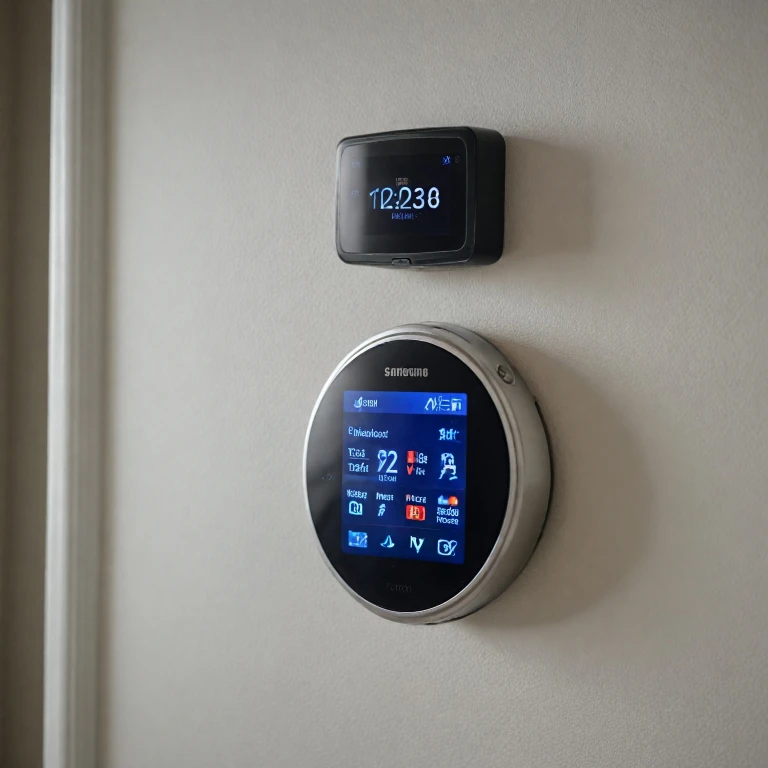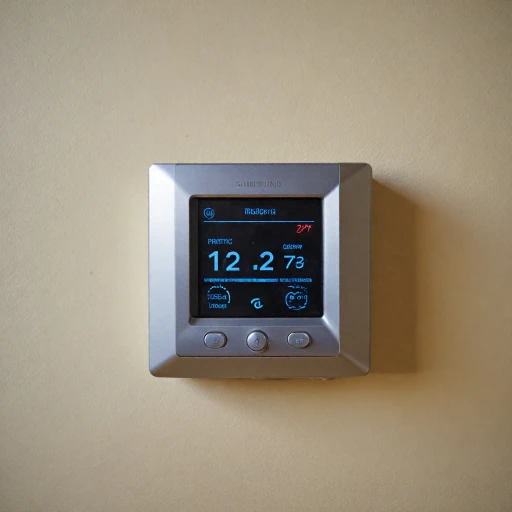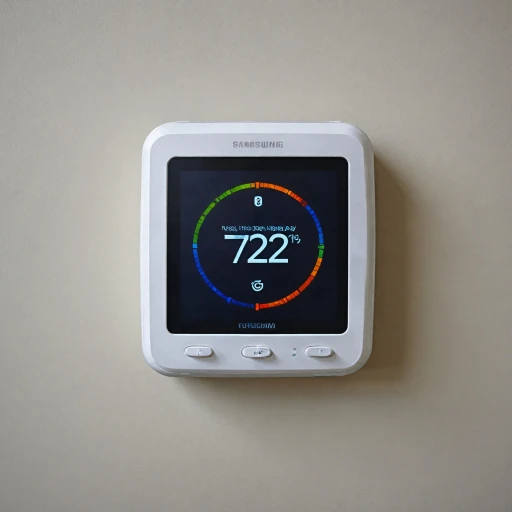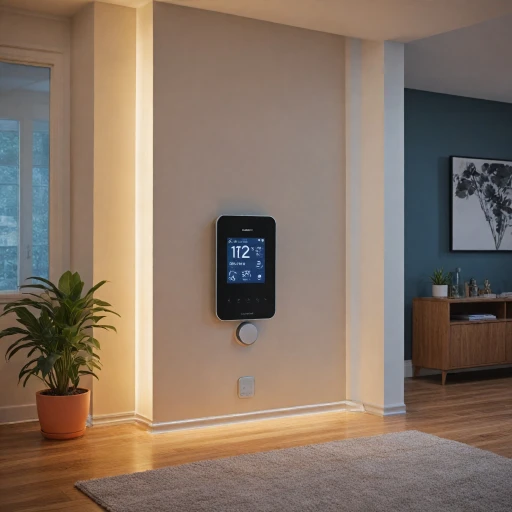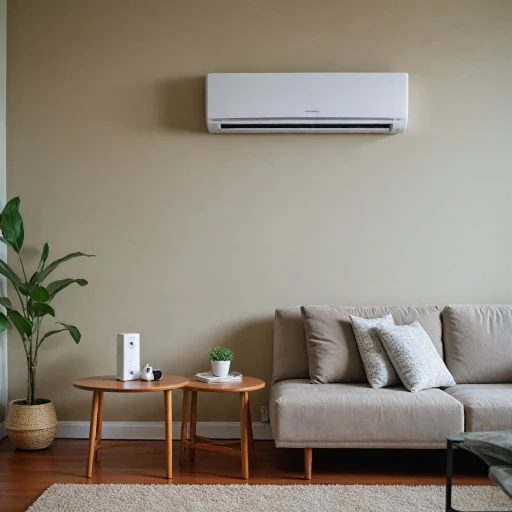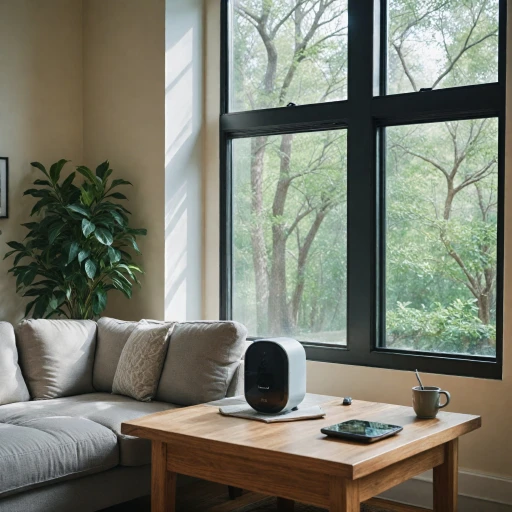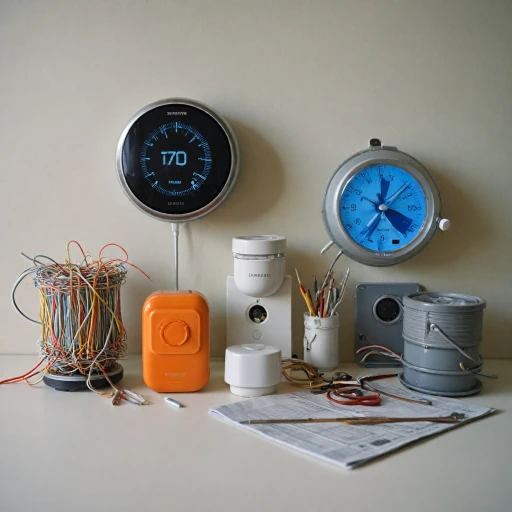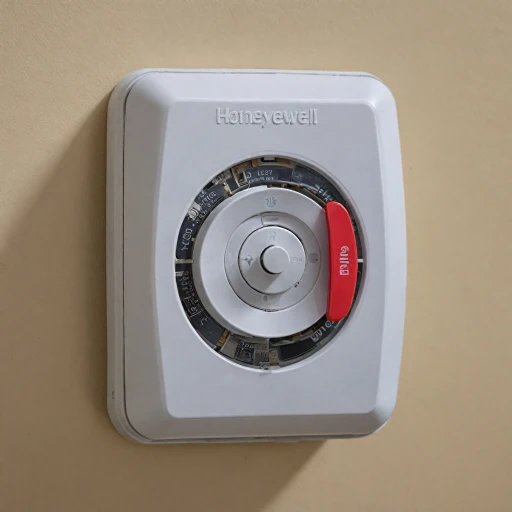
Understanding Smart Thermostats
Exploring the Basics
Smart thermostats are rapidly gaining popularity as an efficient way to manage home temperature settings. They are an advancement over traditional models, providing not only precise control over heating and cooling systems but also integrating smart technology to enhance overall home management. These devices can learn your schedule and habits, adapting the heating and cooling accordingly, which often results in energy savings and increased comfort. In terms of functionality, smart thermostats come equipped with sensors and Wi-Fi connectivity, allowing them to detect occupancy, adjust settings remotely, and even provide energy consumption data. Popular models such as the Nest thermostat are designed with easy-to-read displays and intuitive interfaces. This makes managing your HVAC system straightforward and more effective. Smart thermostats can also send alerts when maintenance is needed or if there's a problem with your HVAC system. This feature ensures that your heating or cooling system remains in optimal condition without unnecessary delays. Nevertheless, understanding the role of batteries is crucial. Some units, such as the Honeywell thermostat, might require batteries, especially in the event of a power outage or as part of certain backup systems. For more detailed insights into the connection between thermostats and battery use, exploring a comprehensive guide on the Honeywell thermostat battery requirements can provide valuable information for potential buyers.Power Sources for Smart Thermostats
Exploring the Various Ways Smart Thermostats Source Their Power
Smart thermostats are an innovative way to manage your home's heating and cooling, but understanding their power requirements is essential. These thermostats primarily connect with your home’s HVAC system to adjust the temperature efficiently. However, how do they stay powered? Let's explore.
In general, most smart thermostats, like the Nest thermostat, draw power directly from the HVAC system through a common wire, commonly known as the "C-wire." This direct connection ensures that the device has a continuous power supply and reduces maintenance, including battery replacement.
Nevertheless, not all homes have this wiring infrastructure, especially older residences. In such scenarios, some thermostats offer a battery-powered alternative. While batteries in thermostats like the Honeywell thermostat can be a backup during power outages, they are essential in homes lacking a C-wire. Alkaline batteries, such as AA or AAA, often serve this purpose, providing the low-voltage power needed for the thermostat's operations.
However, it's crucial to note that even in systems using a hardwired connection, thermostats might integrate battery compartments for added safety during power fluctuations. If you're curious about the ins and outs of Honeywell thermostat batteries and how to manage them, read more about them to ensure your system operates smoothly.
- If your system needs batteries, keep spares handy for quick battery replacement.
- Regularly check for a low battery alert on your thermostat’s display.
- Consider the HVAC system compatibility when selecting a power source for thermostats.
By understanding the power sources of smart thermostats, you can ensure that your thermostat remains operational and your home’s temperature stays comfortable year-round.
Do Smart Thermostats Need Batteries?
Exploring Battery Necessity in Smart Thermostats
Whether a smart thermostat needs batteries largely depends on the specific model and its power sources. Generally, several smart thermostats, including popular brands like Nest and Honeywell, utilize batteries as a backup power option or even as a primary power source. This ensures that vital functions such as maintaining display capabilities and executing basic heating or cooling commands remain uninterrupted during a power outage. Smart thermostats typically coordinate with an HVAC system to manage home heating and cooling. More advanced models draw power directly from these systems, thereby negating the constant need for battery replacement. However, in cases where the HVAC system's power supply might be low or inconsistent, the thermostat's functionality can be compromised. Here, the integration of batteries becomes beneficial. Some smart thermostats feature a battery compartment designed to house AAA alkaline batteries or similar variants. These batteries provide an uninterrupted power supply to maintain core functionalities like temperature regulation settings, even during inconsistent power availability from your heating or cooling system. A frequently asked question is: does every smart thermostat require a constant battery replacement? The answer is not always straightforward. While some thermostats might be equipped with batteries as a precautionary measure, their reliance on HVAC power means that the batteries are more of a backup rather than a primary component. In such cases, a low consumption rate of batteries in thermostats extends the period before a change is necessary. For those considering the pros and cons of a battery-reliant system or facing challenges with their current setup, understanding your smart thermostat's battery usage is essential. Learn how to effectively manage your device to ensure it seamlessly supports your heating and cooling systems. For further guidance on enhancing your home automation, consider exploring ways to improve home security with effective solutions.Benefits of Battery-Powered Thermostats
Advantages of Battery-Operated Smart Thermostats
Smart thermostats come with a variety of benefits, especially those that utilize batteries as a power source. While these thermostats can be connected to your main power source, having batteries can serve as a backup or even primary source of power in certain situations. Understanding these advantages helps homeowners make informed choices when equipping their HVAC systems.- Uninterrupted Heating and Cooling: During a power outage, a battery-powered smart thermostat continues to function efficiently. This can be particularly helpful in maintaining a stable temperature in your home, ensuring your heating and cooling system stays operational.
- Wireless Installations: Battery-operating smart thermostats allow for more flexible installations. Since they are not dependent on wiring, they can be placed at optimal locations for temperature readings, enhancing the efficiency of your HVAC system.
- Reliable Display and Functionality: A low battery warning ensures that you replace batteries in time, ensuring the display and functions like scheduling and connectivity remain consistent and reliable. Devices like the Nest and Honeywell thermostats often feature an easy-to-access battery compartment for hassle-free changes.
Challenges with Battery Usage
Challenges Faced When Using Battery-Powered Thermostats
While battery-operated smart thermostats offer several benefits, they also come with their own set of challenges that users should be aware of. Batteries in thermostats are crucial for maintaining the device's function during a power outage, but they require regular maintenance and replacement. When using batteries such as AAA alkaline, it's essential to monitor for low battery levels, which can hinder the thermostat's efficiency and disrupt the heating and cooling systems. It’s pertinent to stay vigilant for the low-battery indicator, which usually appears on the thermostat display, signaling the need for replacement. Moreover, some thermostat batteries, like those in a Nest or Honeywell thermostat, have varying lifespans depending on use, requiring periodic checking and changing. Inconsistent temperature control may also arise if the batteries are not replaced when needed. The battery compartment should be easily accessible for smooth replacement, yet it can sometimes present challenges for those unfamiliar with their HVAC thermostat systems. Regular battery changes may seem cumbersome, but it's a small price for the advantage of ensuring your heating and cooling system operates smoothly. Batteries also serve as a backup power source, ensuring your thermostat continues to function even when there is no electrical power available. However, this benefits from clarity with proper guidelines and understanding which types of thermostats meet specific home requirements. They can range from traditional battery-operated units to more advanced thermostats that work seamlessly with your HVAC system. Ultimately, assessing your HVAC needs, understanding your devise’s battery requirements, and knowing how often to check and replace batteries can help ensure your system is always ready to maintain the desired temperature levels.Choosing the Right Thermostat for Your Home
Factors to Consider in Selecting a Smart Thermostat
Choosing the right smart thermostat for your home involves understanding your specific heating and cooling needs, as well as the power sources available in your home. Here are some key factors to take into account:
- Compatibility with your HVAC system: Ensure that the smart thermostat is compatible with your existing HVAC system. Whether you have a traditional furnace, a heat pump, or a more complex heating and cooling system, compatibility is crucial for optimal performance.
- Power options: Depending on your home's setup, you may prefer a thermostat that uses wired connections or one that depends on battery power. A hardwired system eliminates the need for frequent battery changes, though battery-powered options can offer flexibility if wiring isn't easily accessible.
- Features and functionality: Different thermostats come with varying levels of smart capabilities. Brands like Nest and Honeywell offer models with advanced features such as learning algorithms, remote temperature control, and integration with smart home systems. Evaluate which features provide the most benefit to your lifestyle.
- Battery management and replacement: If opting for a battery-powered thermostat, consider the ease of accessing the battery compartment for battery replacement. Some models, like the Nest thermostat, make replacing batteries straightforward, while also providing alerts for low battery levels.
- Display quality and controls: Consider the clarity and responsiveness of the display and controls. A user-friendly interface will help you navigate settings with ease and ensure you can quickly check on your system status. The display should offer clear content visibility even from a distance.
- Cost and services: Smart thermostats come at varying price points, reflecting their range of features and capabilities. Weighing the cost against the benefits offered by the device, as well as any additional services it might require, is essential.
By taking these factors into account, you will be better equipped to choose a smart thermostat that meets your needs, ensures energy efficiency, and enhances your home's comfort.
